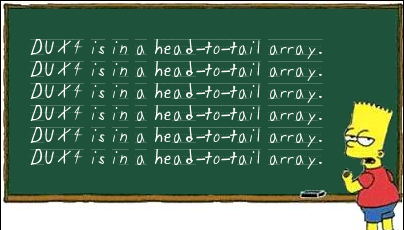Posted by Gregory J Block MSc PhD on Dec 19, 2014
Just in case FSH muscular dystrophy (FSHD) wasn't confusing enough, now there’s a lot of talk about FSHD2. FSHD2 represents a small percentage of people with FSHD. There are no obvious clinical differences between the FSHD1 and FSHD2, meaning you can't look at someone with FSHD and immediately know what type they have. Getting to know the differences between the two on a genetic level, however, has helped shape our understanding of how FSHD works. Let’s take some time to make sure we’re all on the same page and understand what’s going on.
FSHD is caused by the inappropriate presence of a protein in skeletal muscle. That protein is called DUX4, and it is encoded by the DUX4 gene. You can read more about that here.

There are up to 200 copies of DUX4 in some of these arrays and there are four relevant arrays located throughout the genome (one on each of two copies of chromosome 4 and chromosome 10).
The repetitive array behaves like a prison cell that keeps DUX4 wrapped up tight, locked away, and silent. Patients with FSHD1 typically have less than 10 copies of DUX4 on one of the chromosome 4 arrays, and that array can’t wrap up tight, whereas all the other arrays wrap up just fine. Patients with FSHD2 have arrays with more than 10 copies of DUX4, but none of the arrays in the genome can wrap up tight. This means that there is a fundamental difference in the mechanism of FSHD and FSHD2 – but the end result is the same – that DUX4 gets made and wreaks havoc on muscle.
The hypothesis was simple (well not really): if a single short array has lost it's ability to be silenced, then there was probably another protein required to silence the arrays. If something was wrong with that hypothetical other protein, then none of the arrays could be silenced. Indeed that is what was found. Patients with arrays of more than 10 repeats commonly have a mutation in a gene called SMCHD1 (99% of people can’t remember those letters, so we call the protein “Smooch”).

These fundamental discoveries have altered how we think about FSHD and opened up many new questions:
Things we now know:
- All sorts of mutations have now been described in the SMCHD1 gene in people with FSHD. The data have been validated and there is genetic testing.
- People with FSHD1 who also happen to have mutations in SMCHD1 have severe FSHD.
- The fact that reduction of activity of SMCHD1 causes DUX4 protein to get made highlights a common mechanism between the two diseases, and support a central role of DUX4 in the disease mechanism of FSHD. However, we still do not know how DUX4 causes muscle to waste away.
- There is a very small subset of FSHD patients that have neither an array of less than 10 repeats or a mutation in SMCHD1, presumably because SMCHD1 has buddies that could be playing a role as well.
Things we don’t know, but need to know.
- How does SMCHD1 function? How does it regulate DUX4?
- Is SMCHD1 a realistic drug or therapeutic target?
- Does re-introducing SMCHD1 (i.e. a working zipper) fix the FSHD2 mechanism? How would that affect the FSHD1 mechanism?
This last question is the premise of a new biotechnology company, Facio Therapies, which has been created by leaders in the FSHD community. This company will use screening efforts to attempt to upregulate SMCHD1 to prevent DUX4 protein from ever being made.
As always, we're here if you have questions.





Connect with us on social media